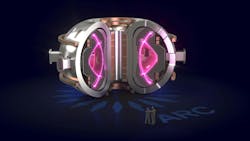Fusion Promise: Virginia Announces Planned New Nuclear Plant by Early 2030s
Nuclear fusion—which creates energy by fusing atoms instead of splitting them as with the fission which powers current commercial reactors—is often seen as a promise 10 years or longer from coming true. Recent experimental successes are encouraging, if still on a relatively small scale.
The commonwealth of Virginia apparently is no skeptic on fusion, however, and this week announced that it is welcoming a startup which will build the world’s first grid-scale commercial fusion nuclear power plant in Chesterfield County by the early 2030s.
If realized, the project led by Commonwealth Fusion Systems could help solve an anticipated energy crisis in a region full of data center expansions.
“This is an historic moment for Virginia and the world at large,” Virginia Gov. Glenn Youngkin said in a statement. “Commonwealth Fusion Systems is not just building a facility, they are pioneering groundbreaking innovation to generate clean, reliable, safe power, and it’s happening right here in Virginia. We are proud to be home to this pursuit to change the future of energy and power.”
The nuclear fusion plant is planned to be built at the James River Industrial Center on land currently owned by utility Dominion Energy Virginia. The utility will partner and provide non-financial contributions, including development and technical expertise as well as leasing rights for the proposed site. Dominion Energy owns and operates numerous nuclear fission plants within its power generation fleet.
"Commonwealth Fusion Systems is the clear industry leader in advancing the exciting energy potential of fusion," said Edward H. Baine, president of Dominion Energy Virginia. "Our customers' growing need for reliable, carbon-free power benefits from as diverse a menu of power generation options as possible, and in that spirit, we are delighted to assist CFS in their efforts."
Fusion could solve future data center dilemma
Northern Virginia is the nation’s largest market for data center facilities due to its proximity to high-performance fiber optic systems. The growth of artificial intelligence and cloud-based computing capacity could push new data center construction above 50 gigawatts (GW) throughout the U.S. into the next decade, according to reports, but current utility-scale power generation may not be up to the task.
Anticipating that electricity shortfall, many tech giants such as Google, Meta and Microsoft are starting to make massive energy supply deals on their own. These future agreements include requests for proposals for small modular reactor (SMR) nuclear plants, considering that nuclear energy is both high capacity and carbon free.
Fusion is considered the holy grail among nuclear energy enthusiasts. Although it’s only created net energy gain in relatively small use cases, the technology promises carbon-free power without the need for uranium or waste from spent fuel rods.
The planned ARC of success
Commonwealth Fusion Systems was created in 2018 and has raised $2 billion in capital since its founding. The company is working to complete its demonstration fusion project, SPARC, at its headquarters in Massachusetts, and hopes to produce its first plasma by 2026 and achieve net fusion energy shortly thereafter, according to reports.
The planned Virginia fusion plant, which is called ARC, is expected to generate close to 400 megawatts (MW) at capacity. Commonwealth Fusion Systems hopes to complete and commission the ARC plant into operation by the early 2030s.
"This is a historic moment. In the early 2030s, all eyes will be on the Richmond region and more specifically Chesterfield County, Virginia, as the birthplace of commercial fusion energy," said Bob Mumgaard, CEO and co-founder of Commonwealth Fusion Systems. "Virginia emerged as a strong partner as they look to implement innovative solutions for both reliable electricity and clean forms of power. We are pleased to collaborate with Dominion Energy."
The promise of nuclear fusion has been pursued by researchers for years, including the multinational International Thermonuclear Experimental Reactor megaproject planned to be completed in France by 2025. The ITER’s reactor hopes to use 300 MW of electricity to infuse elemental plasma (such as superheated hydrogen) to create about 500 MW of heat for periods up to 10 minutes. The U.S. Lawrence Livermore National Laboratory also has achieved net fusion energy with its fusion experiments, but not at a level to sustain a power plant.
Fusing atoms together, in theory, would release a multi-fold level of energy beyond other resources, without generating the radioactive nuclear waste of fission. Only a handful of projects, however, have proved successful in generating notable amounts of net energy, meaning more energy generated than was consumed in creating the fusion.
Prospects for a Small, Modular and Reactive Future
Check out Microgrid Knowledge's free E-Book






